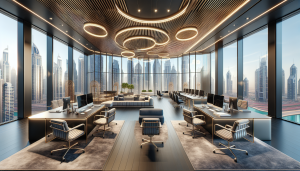10 Timeless Luxury Interior Design Principles That Create Luxurious Spaces
Creating genuinely luxurious interiors isn’t about chasing the latest Instagram trends or stuffing rooms with expensive furniture. It’s about mastering fundamental principles that have transformed ordinary spaces into breathtaking sanctuaries for centuries. Whether you’re renovating a Dubai penthouse or a London townhouse, these ten luxury interior design principles will guide you toward creating interiors that feel both timeless and spectacular.
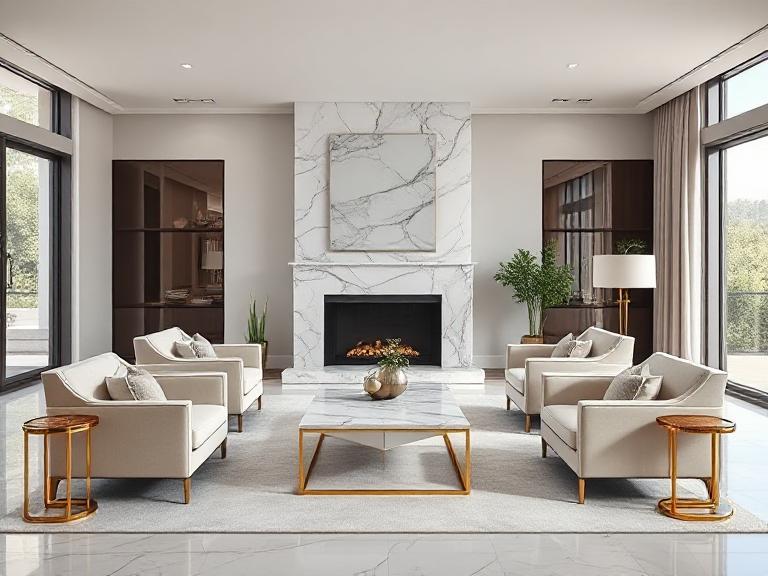
1. Balance and Proportion: The Foundation of Elegant Design
Think of balance as the invisible force that makes a room feel “just right.” Walk into any five-star hotel lobby and you’ll instantly feel it—that sense of visual equilibrium that lets you breathe easier. This isn’t an accident; it’s intentional design.
Understanding the Three Types of Balance
- Symmetrical balance – Mirror-image arrangements are perfect for formal spaces like dining rooms and master bedrooms. Two matching table lamps flanking a bed? That’s symmetrical balance at work.
- Asymmetrical balance – Different objects of equal visual weight create modern, dynamic spaces. A large sofa on one side is balanced by two chairs and a side table on the other, and achieves this beautifully.
- Radial balance – Elements radiating from a central point, ideal for circular dining tables or statement chandeliers that command attention.
Pro tip: If a room feels “off” but you can’t pinpoint why, it’s usually a balance issue. Step back and assess the visual weight on each side.
2. The Golden Ratio: Nature’s Interior Design Secret
Here’s where things get mathematical—but stay with me, because this 2,400-year-old luxury interior design principle (roughly 1:1.618) explains why certain spaces feel mysteriously perfect.
Practical Applications of the Golden Ratio
- Furniture placement: Position your sofa about 62% into the room rather than dead centre
- Art hanging: Place artwork so the centre sits at roughly 62% of the wall height
- Colour distribution: Use 60% dominant colour, 30% secondary colour, and 10% accent colour
- Rug sizing: Your rug should cover approximately 60% of your seating area
The ancient Greeks used this in the Parthenon, and it works just as brilliantly in contemporary Dubai apartments today.
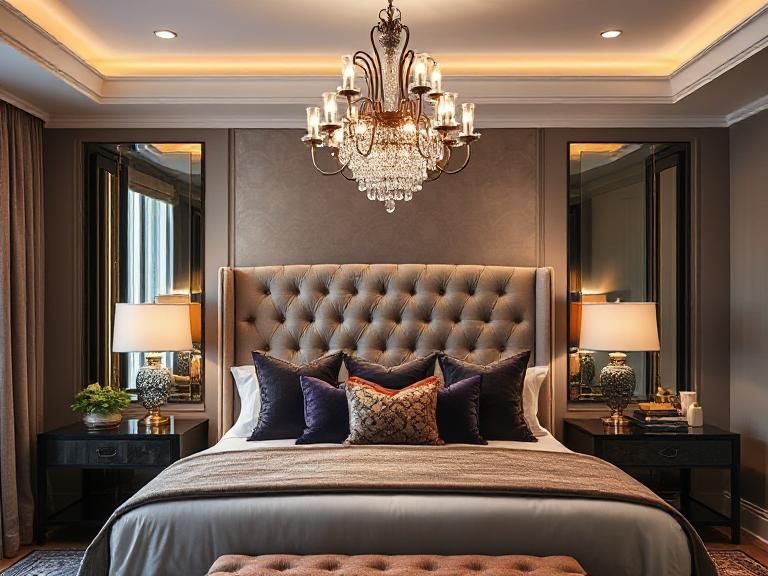
3. Creating Visual Hierarchy: Guiding the Eye
Your eye shouldn’t ping-pong around a room like a confused tourist. Good design creates a clear path: primary focus, secondary elements, and supporting details.
Building Effective Visual Hierarchy
- Scale variation – Mix large statement pieces with medium and small accessories. An oversized mirror becomes your focal point when surrounded by smaller artworks.
- Colour contrast – Your eye naturally goes to the brightest or most contrasting element first. Use this strategically to highlight what matters.
- Texture placement – Highly textured or patterned elements grab attention faster than smooth surfaces.
- Strategic lighting – What you illuminate becomes important. It’s why museums use spotlights.
In luxury properties with multiple design elements competing for attention, visual hierarchy prevents sensory overload.
4. The Power of Negative Space: Less Is Actually More
Here’s the counterintuitive truth about luxury: empty space is as valuable as filled space. The Japanese have known this for centuries (they call it “ma”), and modern minimalism has finally caught up.
Why Negative Space Matters
- Reduces visual clutter and mental fatigue
- Makes your beautiful pieces stand out rather than compete
- Creates breathing room that signals sophistication
- Improves traffic flow and functionality
- Allows architectural features to shine
Real talk: That’s why billionaire penthouses often look “empty” compared to middle-class homes crammed with furniture. It’s not that they can’t afford more—they understand that restraint equals elegance.
5. Colour Theory and Emotional Impact
Colours aren’t just pretty—they’re psychological triggers. Blue calms you down (why so many bedrooms use it), red energises (hello, dining rooms), and beige… well, beige gets unfairly criticised but creates the perfect neutral canvas.
Luxury Colour Strategies
- Monochromatic sophistication – Different shades of one colour create depth without complexity. Think cream, beige, and warm white layered together.
- Complementary drama – Colours opposite on the colour wheel (like navy and gold) create striking, memorable spaces.
- The 60-30-10 rule – 60% dominant colour, 30% secondary, 10% accent. This ratio never fails.
- Regional considerations – Dubai clients often prefer warm golds and rich jewel tones, while UK markets lean toward cooler greys and heritage greens.

6. Texture and Material Selection: The Tactile Dimension
A room done in all smooth surfaces feels sterile, like a hospital. All rough textures? Feels unfinished. The magic happens in the mix.
Layering Textures for Luxury
- Natural stone and marble – Timeless, cool to the touch, and instantly elevates any surface
- High-grade fabrics – Velvet, silk, linen, and wool each bring different visual and tactile qualities
- Metallic finishes – Brass adds warmth, chrome brings a modern edge,and brushed gold hits the sweet spot between
- Custom woodwork – Nothing says “bespoke luxury” like hand-finished cabinetry
- Climate considerations – Dubai’s heat demands different materials than London’s dampness
A successful space might pair a rough-hewn coffee table with a velvet sofa, smooth marble floors with textured wool rugs, and matte walls with glossy accents.
7. Lighting Design: The Make-or-Break Element
I’ve seen million-dollar renovations ruined by bad lighting. You can have the perfect furniture, ideal colours, and exquisite materials, but terrible lighting makes it all look cheap. Good lighting? It’s pure magic.
The Three Essential Lighting Layers
- Ambient lighting – Your base layer. Ceiling fixtures, recessed lights, and natural light illuminate the entire space.
- Task lighting – Focused illumination for specific activities: reading lamps, under-cabinet kitchen lights, bathroom vanity fixtures.
- Accent lighting – The drama makers. Picture lights, uplights on plants, and LED strips behind headboards that make your room Instagram-worthy.
- Dimmer switches – Non-negotiable. They transform one room into multiple moods.
Insider secret: Luxury designers never use overhead lighting alone. It’s harsh and unflattering. Always combine multiple light sources at different heights.
8. Scale and Proportion: Getting the Size Right
Ever see a tiny sofa lost in a massive room? Or furniture so oversized you can barely walk around it? That’s a scale problem, and it’s surprisingly common.
Key Scaling Considerations
- The two-thirds rule – Your sofa should take up roughly two-thirds of your wall length, not the entire wall or just a quarter of it.
- Coffee table proportions – Should be about two-thirds the length of your sofa and sit 14-18 inches away from it.
- Art sizing – Artwork should be 50-75% the width of the furniture beneath it. Too small looks timid, too large overwhelms.
- Ceiling relationships – In rooms with 10-foot ceilings or higher, you need larger furniture to avoid everything looking doll-house-sized.
- Doorway transitions – Consider how rooms relate to each other. Dramatic scale changes between adjoining spaces feel jarring.
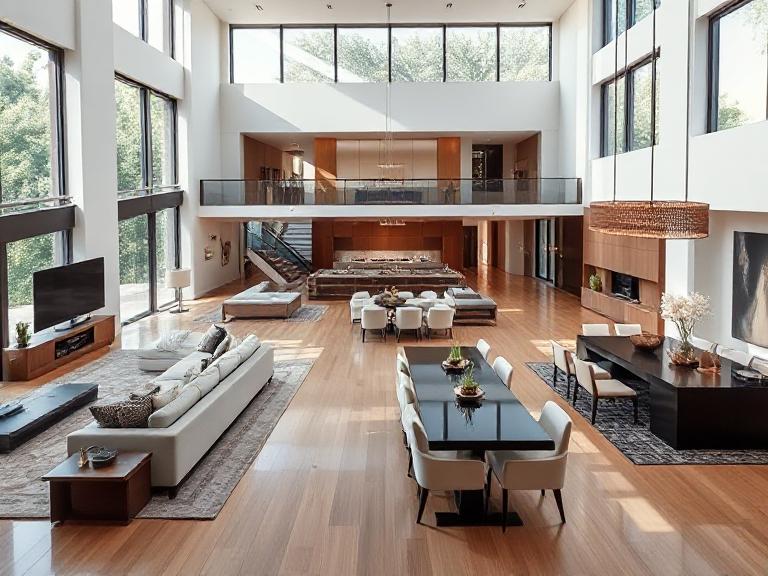
9. Flow and Functionality: Beautiful Spaces That Actually Work
A gorgeous room that doesn’t function properly is like a sports car that won’t start—impressive to look at, frustrating to use. Luxury design must serve life, not hinder it.
Creating Functional Flow
- Traffic patterns – Maintain 30-36 inches of clearance for main walkways. People shouldn’t have to sidestep furniture to cross a room.
- Activity zones – Define areas for different purposes, even in open-plan spaces. A rug, lighting change, or furniture arrangement can create invisible boundaries.
- Smart storage – Luxury isn’t about displaying everything you own. Built-ins, hidden storage, and clever cabinetry keep visual clutter at bay.
- Indoor-outdoor connections – Particularly crucial in Dubai’s climate. Sliding glass walls, consistent flooring, and transitional spaces blur the boundaries beautifully.
Ask yourself: Can guests navigate your space intuitively? Can you carry a tray from the kitchen to the living room without obstacle courses? If not, redesign the layout.
10. Cultural Considerations and Regional Adaptation
What screams luxury in London might feel completely wrong in Dubai—and vice versa. Smart designers adapt luxury interior design principles to respect local culture, climate, and preferences.
Regional Design Distinctions
- Dubai considerations – Privacy is paramount (window treatments, entry sequences), traditional Islamic geometric patterns add cultural resonance, marble and cooling materials combat heat, and gold accents align with regional tastes.
- UK considerations – Heritage architecture requires sensitive modern integration, maximising natural light in greyer climates, celebrating local craftsmanship and materials, and respecting period features while updating functionality.
- Climate-specific solutions – Material choices must withstand local conditions. What works in temperate London won’t necessarily survive Dubai’s heat and sun exposure.
- Local artisan integration – Incorporating regional crafts and artists creates authentic, unique spaces that tell a story.
The best luxury design doesn’t impose a generic “international style” but thoughtfully adapts timeless principles to the local context.
Bringing It All Together: Creating Your Luxury Interior
These ten luxury interior design principles aren’t meant to be followed rigidly like a recipe. They’re tools in your design toolbox—sometimes you’ll emphasise one over another depending on your space, needs, and personal style.
Your Action Plan
- Start with clarity – Define your vision before buying a single item. What feeling do you want to create?
- Prioritise wisely – Invest in key pieces that last: a quality sofa, proper lighting, and durable flooring. You can upgrade accessories later.
- Balance trends with timelessness – Trendy throw pillows? Sure. Trendy $15,000 sofa? Probably not unless you’re redecorating every few years.
- Quality over quantity – Five exceptional pieces beat twenty mediocre ones every time.
- Consider professional guidance – Experienced designers save you costly mistakes and have access to resources you don’t.
The most successful luxury interiors balance these principles while reflecting the people who live in them. Your home should tell your story—just told really, really well.
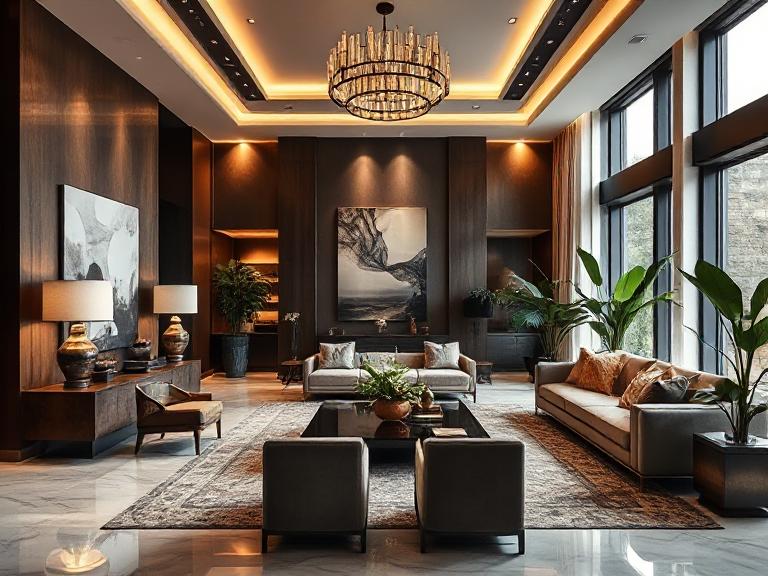
Final Thoughts
Creating luxurious interiors isn’t reserved for those with unlimited budgets or professional designers on speed dial. Understanding and applying these timeless principles puts sophisticated design within reach, whether you’re refreshing a single room or planning a complete renovation.
The beauty of these principles? They’ve worked for centuries and will continue working for centuries more. Trends come and go (remember when everything was shabby chic?), but balance, proportion, thoughtful lighting, and cultural sensitivity never go out of style.
Ready to transform your space using these principles? Whether you’re working on a Dubai property or a UK residence, understanding these fundamentals is your first step toward creating interiors that impress today and endure tomorrow.
Discover Your Design Profile - Take the test:
Udostępnij:
- Kliknij, aby udostępnić na Facebooku (Otwiera się w nowym oknie) Facebook
- Kliknij, aby udostępnić na Pinterest (Otwiera się w nowym oknie) Pinterest
- Kliknij, aby udostępnić na X (Otwiera się w nowym oknie) X
- Kliknij, aby udostępnić na LinkedIn (Otwiera się w nowym oknie) LinkedIn
- Kliknij aby podzielić się na Reddit (Otwiera się w nowym oknie) Reddit
- Kliknij, aby wysłać odnośnik e-mailem do znajomego (Otwiera się w nowym oknie) E-mail
- Kliknij by wydrukować (Otwiera się w nowym oknie) Drukuj

